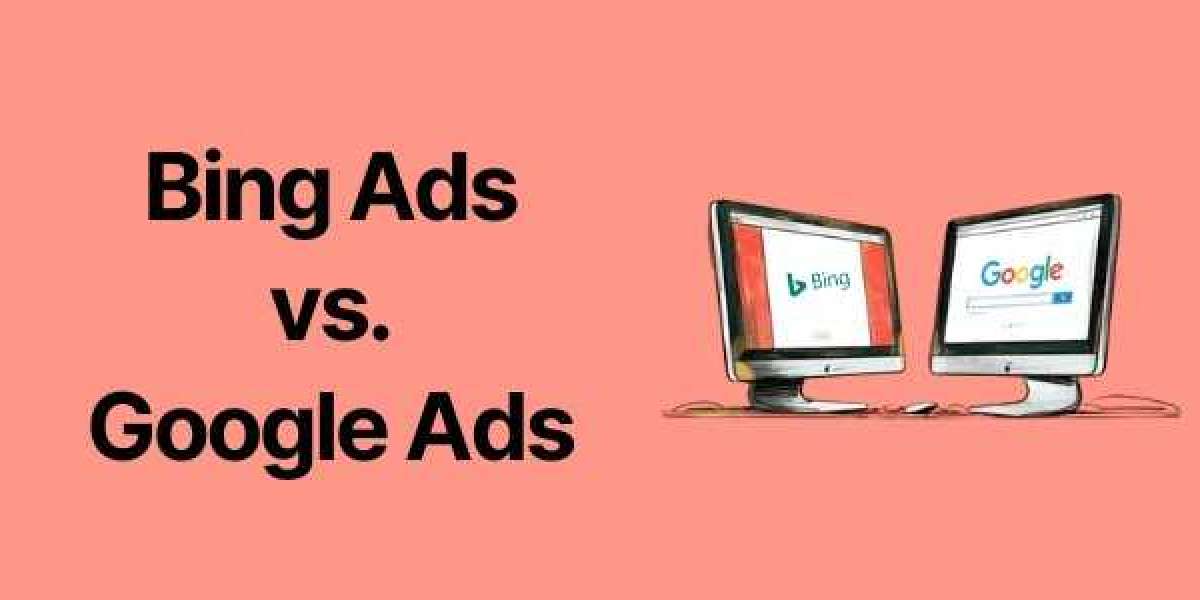Pay-Per-Click (PPC) advertising is a critical component of any digital marketing strategy, allowing businesses to reach highly targeted audiences and drive traffic to their websites. Two of the major platforms for PPC campaigns are Google Ads and Bing Ads. While both platforms share similar features, understanding the key differences can help businesses decide where to allocate their budgets for the most effective results.
This article explores the key differences between Google Ads and Bing Ads for PPC campaigns and how PPC marketing services can help businesses leverage each platform effectively. We'll also discuss why ppc marketing agencies and PPC digital marketing agencies play a pivotal role in managing campaigns across both platforms.
Google Ads vs. Bing Ads: Market Share and Audience Reach
Market Share
One of the most significant differences between Google Ads and Bing Ads is their market share. Google is the dominant search engine, with over 90% of the global search market share. As a result, PPC marketing companies tend to focus heavily on Google Ads to reach a larger audience. Google Ads offers access to billions of searches per day, making it a powerful tool for reaching vast numbers of potential customers.
Audience Demographics
Another key difference between Google Ads and Bing Ads is the demographic makeup of their users. Google’s user base tends to be younger, tech-savvy, and spread across a wide range of industries and interests. This makes Google Ads ideal for targeting a broad, diverse audience.
Bing, on the other hand, has a user base that is slightly older, with higher household incomes and often more professional backgrounds. Many Bing users are located in the United States, and a significant portion uses Bing as the default search engine on Microsoft devices.
Cost and Competition
Cost-Per-Click (CPC)
One of the main advantages of Bing Ads is that it tends to have a lower Cost-Per-Click (CPC) compared to Google Ads. Because Bing Ads has less competition, businesses can often achieve higher ad placements for lower bids. For example, highly competitive keywords in Google Ads, such as “insurance” or “mortgage,” tend to have significantly higher CPC rates compared to Bing Ads.
This cost advantage makes Bing Ads an appealing option for businesses with smaller budgets or those looking to maximize their return on investment (ROI), ppc marketing companies that work with Bing Ads often find that campaigns can be more affordable while still delivering valuable traffic.
Competition
As mentioned earlier, Google’s larger user base means more advertisers are competing for ad space, especially in popular industries like ecommerce, finance, and technology. This high level of competition often drives up CPC rates on Google Ads. In contrast, Bing Ads offers a less saturated market, allowing businesses to achieve prominent ad placements without the fierce bidding wars commonly seen on Google.
Ad Features and Functionality
Ad Formats
Both Google Ads and Bing Ads offer a variety of ad formats, including search ads, display ads, shopping ads, and remarketing ads. However, Google Ads has a more extensive range of ad extensions and formats compared to Bing Ads. For example, Google Ads offers advanced ad extensions such as price extensions, promotion extensions, and callout extensions, allowing businesses to enhance their ads with additional information.
While Bing Ads also offers many of the same ad extensions, including sitelink extensions and call extensions, Google tends to be the leader when it comes to innovation in ad formats. For this reason, PPC digital marketing agencies often prioritize Google Ads for businesses that want to take advantage of cutting-edge ad features.
Search Partner Networks
Google Ads and Bing Ads both offer the ability to display ads on their respective search partner networks. Google’s network includes a wide array of websites, YouTube, and apps, giving advertisers a broad reach across the web. Google’s network is much larger and more diverse than Bing’s, making it a powerful tool for increasing visibility beyond just search engine results pages.
Targeting Options and Flexibility
Geographic Targeting
Both Google Ads and Bing Ads offer geographic targeting, allowing businesses to display their ads to users in specific regions, countries, or even cities. However, Bing Ads provides slightly more precise options for targeting local audiences. For example, Bing Ads allows advertisers to target users based on their physical location or their search intent, making it easier to reach users who are looking for local services.
Google Ads also offers robust geographic targeting, but some ppc management experts find Bing Ads to be more flexible in this regard, especially for local businesses targeting specific areas.
Device Targeting
Google Ads and Bing Ads both allow businesses to target ads based on the user’s device, whether it’s a desktop, mobile, or tablet. However, Bing Ads offers greater control over device targeting. Advertisers can set different bid adjustments for desktop, mobile, and tablet users, allowing for more customized campaigns based on device performance.
While Google Ads does allow for device-specific bidding, Bing’s platform offers a more granular approach, which PPC marketing agencies can use to optimize campaigns for different devices effectively.
Reporting and Analytics
Analytics and Reporting Tools
When it comes to analytics and reporting, Google Ads has a more robust set of tools for tracking and measuring campaign performance. Google Analytics, for example, integrates seamlessly with Google Ads, providing detailed insights into user behavior, conversion paths, and ROI. This makes Google Ads a go-to platform for ppc marketing services that require advanced data analysis.
Bing Ads also offers comprehensive reporting tools, but the platform lacks some of the depth and customization options available in Google Ads. However, for businesses that don’t require the advanced features of Google’s reporting suite, Bing Ads’ tools are more than sufficient for tracking campaign performance.
Third-Party Tool Integration
Google Ads has a clear advantage when it comes to third-party tool integration. From CRM platforms to marketing automation software, Google Ads integrates with a wide range of tools that help businesses streamline their PPC management efforts. While Bing Ads does offer some third-party integrations, Google’s extensive ecosystem gives it an edge for businesses that rely heavily on external tools.
The Role of PPC Agencies in Managing Google Ads and Bing Ads Campaigns
While Google Ads and Bing Ads have their differences, both platforms play a vital role in a comprehensive ppc digital marketing agency strategy. The decision to use one or both platforms should be based on a business’s goals, audience, and budget.
PPC marketing agencies specialize in creating and managing campaigns across both platforms, ensuring that businesses get the most value from their investment. By leveraging the strengths of each platform, agencies can craft a multi-channel PPC strategy that maximizes reach and drives conversions.
Conclusion
Google Ads and Bing Ads each offer distinct advantages and challenges for businesses running PPC campaigns. While Google Ads boasts a larger market share, more advanced ad formats, and extensive reporting tools, Bing Ads offers lower competition, more affordable CPC rates, and a valuable demographic audience.
Both platforms can play a crucial role in a well-rounded PPC strategy. Whether through Google’s innovative features or Bing’s cost-effective opportunities, partnering with PPC marketing companies or a PPC digital marketing agency can ensure businesses effectively leverage the strengths of each platform to maximize their return on investment.














